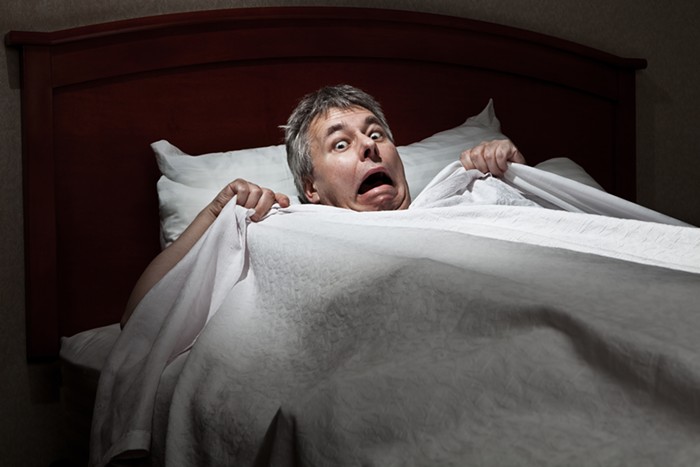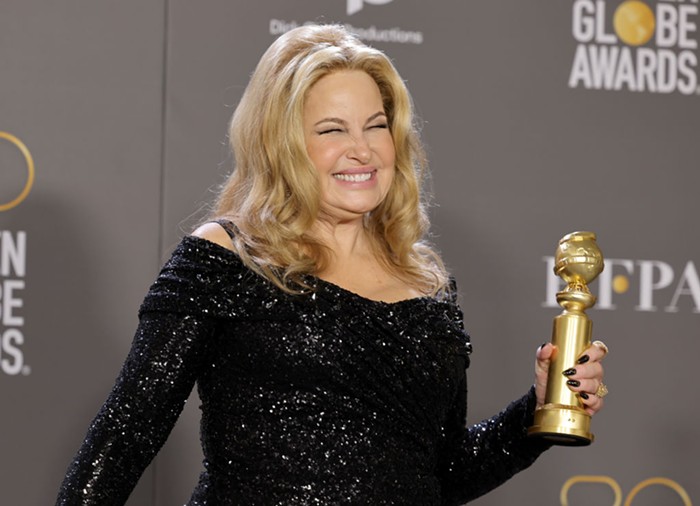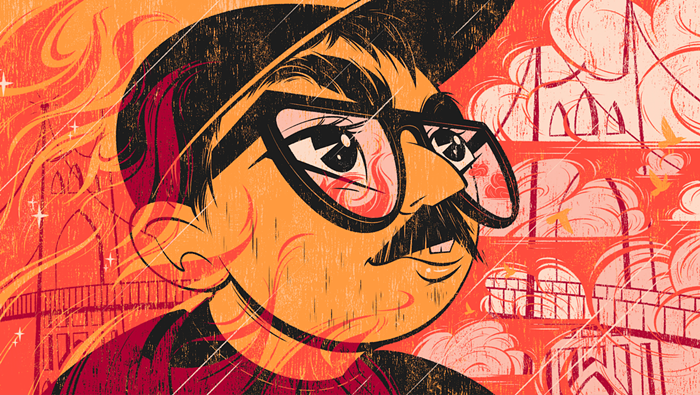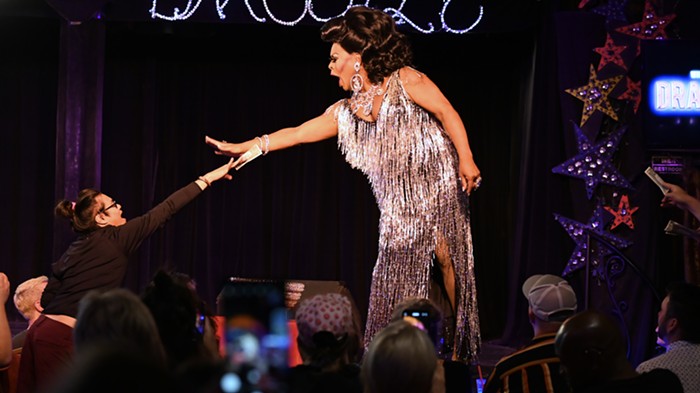
- Courtesy PICA/Bruce Clayton Tom
"Is it okay to cry at movies?" That's the improbable question that echoes over the speakers towards the beginning of Amy O'Neal's Opposing Forces, which opens with five B-boys performing precise choreography on a stage emblazoned with a slick geometric pattern. The performance begins like a party—the show I went to started 15 minutes late, and during the delay, audience members danced on the low surface where most of the action takes place. Once the vamping was over, the real dancing started—some of the highest-energy dancing I've seen, break or otherwise, and that would've been worth seeing were it not part of a larger interrogation of gender performance.
Which is what, with that question, it becomes. Opposing Forces, which will be performed tonight and tomorrow at the Redd, takes breakdancing, an art form that's full of a kind of posturing of masculinity, and deconstructs it through the use of documentary audio from the dancers themselves, breaking up their performances with a conversation about gender that wouldn't be out of place in a women's studies class.
If that seems incongruous, well, it shouldn't. Who knows more about performing masculinity than men who are entrenched in an art form that, at first blush, would seem to privilege a traditional type of manliness? In one recording, dancers are asked to rate their feelings of masculinity or femininity on a scale from zero (completely feminine) to 10 (completely masculine). Most stick safely to the Y-chromosome end of the scale. But things quickly become more complex: In one of the voice-overs, one dancer discusses being a single dad. Another says that he finds the distinction between the masculine and feminine increasingly tenuous when he considers that he was raised by a single mom who worked hard to support three kids by herself. This leads into a solo performance that contains hints of drag.
But then, doesn't all of it? After seeing Opposing Forces, I couldn't get RuPaul's immortal quote out of my head: "We're born naked, and the rest is drag." Whether we're performing the gender we identify with or attempting to embrace what we associate with one we don't—or pointing out the uselessness of the gender binary to begin with—we're performing something.
As O'Neal's assembled B-boys danced through pas de deux and solos, as they obscured their identities under hoods, as their voice-overs became more and more frank in their discussion of B-girls and of hip-hop's "bitches 'n' hos" problem, as one dance involving frantic motions underneath a flashlight suggested something like the scrutiny of embodying any kind of fraught identity, as they marked the pristine floor with sweat, what I was seeing seemed less and less like a performance, and more like an intimate confession, something closer to the truth about what it's like to feel pressured to be a man, when that word is defined narrowly—an experience I obviously don't have access to. "It's not about how it looks," said one dancer's recorded voice towards the end of the performance. "It's about how it feels."
Further reading:
• With Beyoncé and Blue Paint, Ten Tiny Dances' Triumphant Return to TBA
• Reckoning with Tyondai Braxton's Restless Synths
• Confronting the Audience in Keyon Gaskin's Its Not a Thing at BodyVox
• Pictures of the Moon with Teeth: TBA's Visual Art Tackles Spirits and Space












